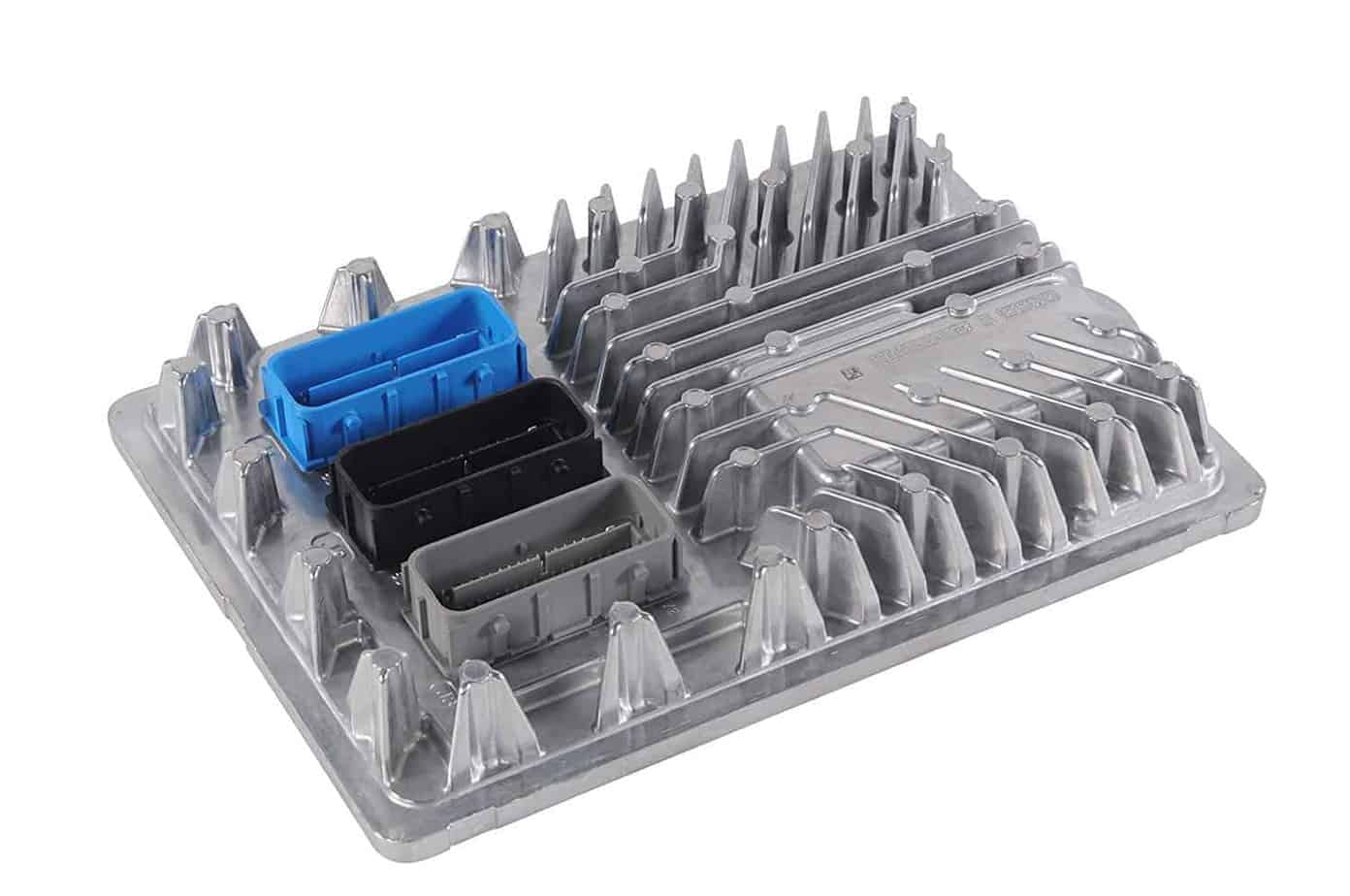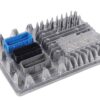Restore Peak Performance to Your GM Truck or SUV
Is your Silverado, Sierra, or Tahoe suffering from frustrating and hard-to-diagnose issues? A faulty Engine Control Module (ECM) is often the culprit behind problems like a no-start condition, intermittent stalling, poor fuel economy, and a persistent Check Engine Light. As the ‘brain’ of your vehicle’s engine, when the ECM fails, it can cause chaos. This isn’t just an inconvenience; it’s a reliability issue that can leave you stranded. I’ve seen it countless times in my shop: a truck that runs perfectly one day and refuses to start the next, all due to a failing processor in the original ECM.
This replacement Engine Control Module is the definitive solution. We take the guesswork and dealership hassle out of the equation. Before we ship it, our technicians will program the module with the very latest GM factory software, specifically matched to your vehicle using its unique VIN. This ensures all engine and transmission parameters are set correctly, restoring the smooth operation and efficiency you expect from your vehicle. You get a component that is ready for installation, saving you a costly trip to the dealer for programming services.
From the Diagnostic Bay
I remember a 2017 Sierra 1500 that came in on a tow truck. The owner was frustrated because it would randomly fail to start, but there were no consistent codes. He’d already replaced the battery and checked the starter. After running diagnostics, we noticed the 5-volt reference signal from the ECM would occasionally drop out, causing the no-start. Instead of a costly diagnostic hunt at the dealership, we installed a VIN-programmed ECM just like this one. After performing the quick security relearn, the truck fired up instantly and the problem was solved for good. It’s a prime example of how the right part, properly prepared, makes all the difference.
Common Signs of a Failing GM ECM
If you’re experiencing any of the following, a faulty engine computer could be to blame. In my 20+ years of experience, these are the most frequent indicators I’ve seen tied directly to a failing 2016 – 2018 Silverado 1500 ECM and its counterparts.
- ✔ Vehicle will not start or is very difficult to start.
- ✔ Check Engine Light is on with codes like P0601, P0606, or other communication faults (U-codes).
- ✔ Intermittent stalling or rough idling for no apparent reason.
- ✔ A noticeable decrease in fuel efficiency.
- ✔ The engine seems to be in a reduced power or ‘limp’ mode.
- ✔ Problems with automatic transmission shifting, as the ECM communicates with the TCM.
A Straightforward Guide to Installation
Installing your new ECM is a manageable job for a DIY enthusiast or a quick task for any professional mechanic. Following these steps will ensure a smooth process.
- Safety First: Always disconnect the negative terminal from your vehicle’s battery before beginning any work on the electrical system.
- Locate the ECM: On most GM trucks and SUVs like the Silverado and Tahoe, the ECM is located in the engine compartment, typically on the driver’s side near the firewall or fender.
- Disconnect and Remove: Carefully unplug the electrical connectors. They have locking tabs that need to be released. Once disconnected, unbolt the old module from its mounting bracket and remove it.
- Install the New Module: Bolt the new, pre-programmed ECM into place and securely reconnect the electrical harnesses. Ensure they click into place.
- Reconnect Battery: Reattach the negative battery terminal.
- CRITICAL FINAL STEP – Security Relearn: If the vehicle does not start, you must perform a Vehicle Theft Deterrent (VTD) relearn using a GM-compliant programming system like Tis2web or Techline Connect. This synchronizes the new ECM with your vehicle’s security system. This step, along with any other necessary relearns (like crankshaft position), is the responsibility of the installer.
Will This Fit My Vehicle?
We guarantee this module is a direct-fit replacement for the original part in a wide range of GM vehicles. Please verify your vehicle and part number against the list below. This module is a direct replacement for part numbers 12692068, 12704476, 12686382, 12674052, 12674472, and 12678815.
- ATS (2017): 3.6L (VIN Y, LF4)
- Corvette (2017): All models
- CTS (2017): 6.2L (Supercharged) & 3.6L (VIN 8, LF3 Twin Turbo)
- Escalade & Escalade ESV (2017): All models
- Sierra 1500 & Denali 1500 (2016-2018): Check original part ID
- Silverado 1500 Pickup (2016-2018): The ideal solution for your 2016 – 2018 Silverado 1500 ECM needs. Check original part ID.
- Suburban 1500 (2017): All models
- Tahoe (2017): All models
- XTS (2017): 3.6L (VIN 8, LF3)
- Yukon & Yukon XL 1500 (2017): All models
Frequently Asked Questions
Why do you need my VIN?
Why do you need my VIN?
Your Vehicle Identification Number (VIN) is essential. We use it to load the exact, correct GM factory software and calibrations for your specific vehicle’s engine, transmission, and options. This ensures a perfect match and proper function right out of the box.
What is a security relearn and why is it required?
The Vehicle Theft Deterrent (VTD) system links your key, ignition, and ECM. When you install a new ECM, the system sees it as a potential theft and prevents the engine from starting. The relearn procedure uses a GM diagnostic tool to securely ‘introduce’ the new ECM to the vehicle, allowing it to start and run. This is a standard security feature on all modern GM vehicles.
Do I need special tools for the security relearn?
Yes. The VTD relearn procedure requires a professional-grade scan tool with access to GM’s Tis2web or Techline Connect software. This is not something a basic code reader can do. Most professional repair shops or mobile mechanics have this capability.
Is this a new or used part?
This is a high-quality, tested, and verified used OEM component. Each module is thoroughly inspected and then programmed with fresh, updated GM software specific to your VIN, ensuring reliability and correct operation.
What if this doesn’t fix my problem?
While a faulty ECM is a common issue, we always recommend proper diagnostics to confirm it’s the source of your problem. If you install the part and the issue persists, it’s likely the fault lies with another component. We guarantee the function of the module itself, but cannot guarantee it will fix issues caused by other bad parts (e.g., wiring, sensors).



